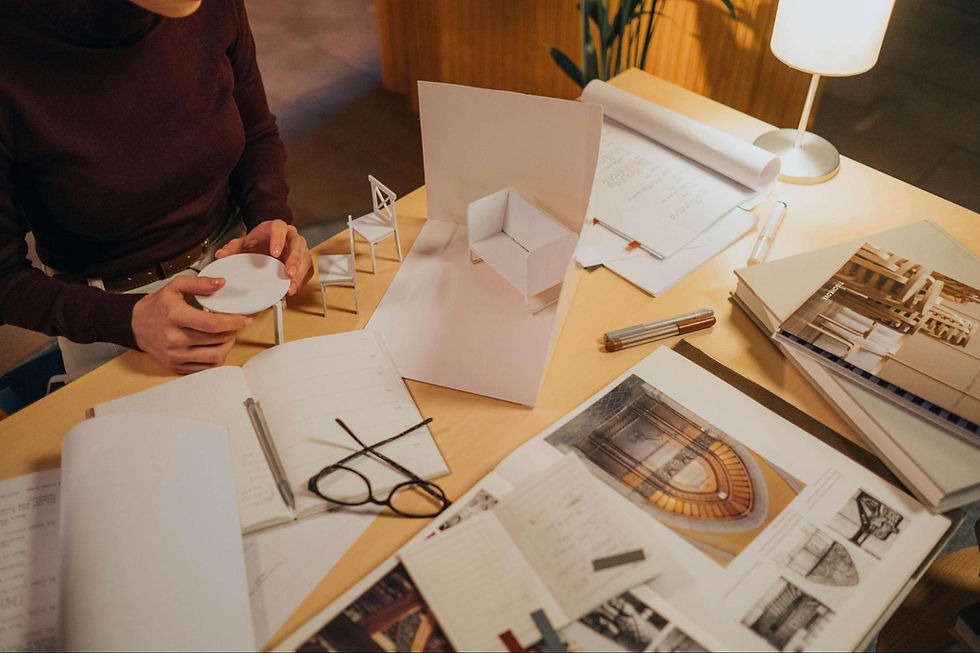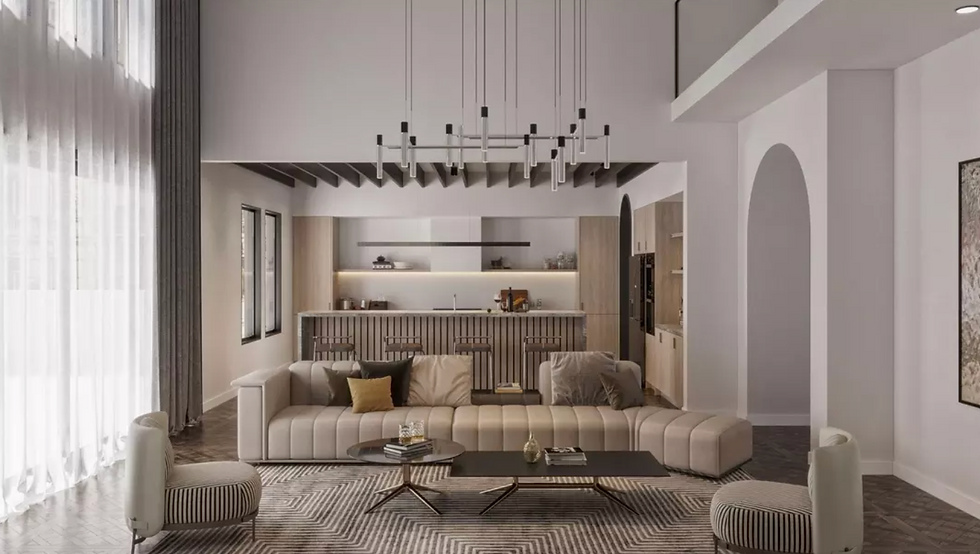Why Sustainable Architecture is the Future of Design
- rmotley
- Apr 15
- 5 min read
In a world increasingly aware of environmental issues, sustainable architecture is becoming not just a trend, but a necessity. With climate change, resource depletion, and environmental degradation top of mind, architects, engineers, and designers are turning to sustainable design practices to create buildings that not only meet human needs but also protect and restore the environment. Sustainable architecture seeks to minimize the negative impact of buildings on the environment while fostering spaces that are efficient, functional, and conducive to the well-being of their inhabitants.
In this blog, we’ll explore why sustainable architecture is the future of design, with a focus on its environmental, economic, and social benefits.

Environmental Benefits: Reducing Carbon Footprints and Preserving Resources
One of the primary reasons sustainable architecture is gaining traction is its significant impact on the environment. Traditional building practices often prioritize short-term gains, such as cheaper construction costs, without considering the long-term environmental consequences. Sustainable architecture, on the other hand, is built on the idea of creating structures that work in harmony with nature.
Reducing Carbon Footprints
Buildings are among the largest contributors to global carbon emissions, accounting for approximately 40% of total energy consumption. Sustainable architecture combats this by incorporating energy-efficient technologies and designs that reduce the carbon footprint of buildings. This includes utilizing renewable energy sources such as solar panels, wind turbines, and geothermal systems, as well as designing buildings that require less energy to heat, cool, and maintain.
Use of Sustainable Materials
Sustainable architecture emphasizes the use of eco-friendly materials that have minimal environmental impact. This includes materials that are locally sourced, recycled, or renewable, such as bamboo, reclaimed wood, or recycled steel. By reducing the reliance on virgin materials, architects can help conserve resources and reduce waste in landfills.
Water Conservation
Another key aspect of sustainable architecture is water conservation. From the installation of water-saving fixtures like low-flow faucets and toilets to the use of rainwater harvesting systems and graywater recycling, sustainable designs prioritize efficient water use. By reducing water consumption, sustainable architecture helps alleviate stress on local water supplies and contributes to the overall health of the ecosystem.
Economic Benefits: Long-Term Savings and Increased Value
While sustainable architecture may come with higher upfront costs due to the use of specialized materials and energy-efficient technologies, it offers significant economic benefits in the long run. These benefits extend not only to homeowners and building occupants but also to businesses and governments.
Energy Efficiency and Reduced Operating Costs
One of the primary advantages of sustainable buildings is their energy efficiency. By designing buildings that are well-insulated and make use of natural light, passive heating, and cooling systems, architects can drastically reduce the amount of energy required to operate a building. This leads to lower utility bills and reduced operating costs over the life of the building.
Increased Property Value
Sustainable buildings tend to have higher property values than traditional buildings, thanks to their lower operating costs, durability, and energy efficiency. Many homebuyers and tenants now prioritize sustainability when making decisions about where to live or work, and as a result, sustainable buildings are in high demand. As the market for green buildings grows, so does the potential for a solid return on investment for property owners and developers.
Government Incentives and Tax Benefits
Governments around the world are increasingly offering incentives and tax credits to encourage the construction of sustainable buildings. These incentives can include rebates for energy-efficient upgrades, tax deductions for the use of renewable energy, and grants for sustainable building projects. These financial incentives make it easier for developers and homeowners to offset the initial investment required for sustainable architecture.
Job Creation
Sustainable architecture is also creating new job opportunities in the green building sector. As demand for sustainable buildings rises, so does the need for skilled workers who can design, build, and maintain them. From architects and engineers to contractors and energy consultants, sustainable architecture is helping to drive the growth of the green economy and create a more sustainable job market.
Social Benefits: Creating Healthier, More Livable Spaces
Sustainable architecture isn’t just about environmental and economic gains—it’s also about creating spaces that enhance the quality of life for people who live and work in them. The social benefits of sustainable design are wide-ranging and contribute to the overall well-being of individuals and communities.
Improved Indoor Air Quality
Traditional buildings often use materials and finishes that emit harmful chemicals, such as volatile organic compounds (VOCs), which can negatively impact indoor air quality and occupants’ health. Sustainable architecture focuses on using non-toxic, low-emission materials that promote better air quality indoors. Proper ventilation systems and air filtration also play a role in ensuring that indoor environments remain healthy and comfortable.
Natural Light and Ventilation
Sustainable buildings are designed to make the most of natural light and ventilation. By orienting windows and openings to maximize daylight exposure and cross-ventilation, architects can create spaces that are brighter, healthier, and more energy-efficient. Natural light has been shown to improve mood, productivity, and overall well-being, while proper ventilation helps to reduce the buildup of indoor pollutants and moisture.
Connection with Nature
One of the key principles of sustainable architecture is creating a connection between the built environment and the natural world. This can be achieved through biophilic design, which incorporates natural elements such as plants, green walls, and natural materials like wood and stone. By bringing nature into the built environment, sustainable architecture promotes mental and physical well-being and creates spaces that foster a sense of calm and connection.
Community Engagement and Social Responsibility
Sustainable architecture also emphasizes community engagement and social responsibility. Many sustainable design projects are focused on revitalizing underdeveloped areas or providing affordable, green housing options for low-income communities. By addressing social issues such as housing inequality, sustainable architecture can help build stronger, more resilient communities. Additionally, public spaces designed with sustainability in mind—such as parks, community gardens, and green public buildings—can enhance the social fabric of a neighborhood and foster a sense of belonging among residents.
Sustainable architecture is not just a passing trend; it is a fundamental shift in how we design and build for the future. The environmental, economic, and social benefits of sustainable design make it clear that sustainable architecture is the future of the built environment. From reducing carbon emissions and conserving resources to creating healthier living spaces and driving economic growth, sustainable architecture offers a path toward a more sustainable, equitable, and resilient future. As architects, designers, and builders continue to innovate and push the boundaries of what’s possible, sustainable architecture will remain at the forefront of the design world, shaping the cities, homes, and communities of tomorrow. To learn more about how we are contributing to this shift, visit Archevoke.




Comments